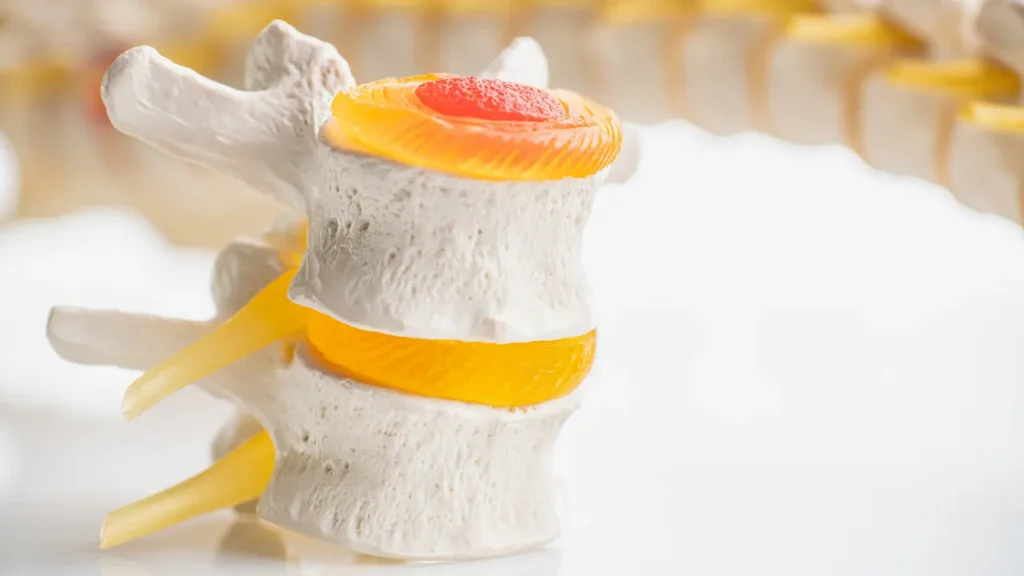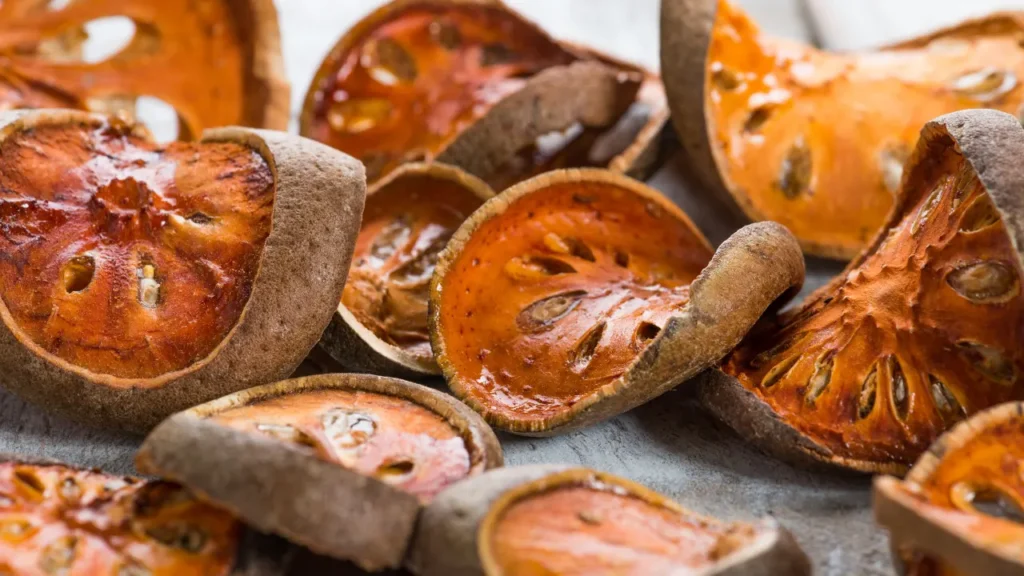Aegle marmelos, sometimes referred to as Bengal quince or golden apple, is a deciduous tree that is indigenous to Southeast Asia and the Indian subcontinent. The bael tree’s fruits, leaves, bark, and roots have long been employed in traditional medical practices, including Ayurveda and Unani. Due to its numerous health advantages, bael has become more popular as a nutritional supplement in recent years. The chemistry of bael, its health advantages, recommended dosages, negative effects, possible drug interactions, and appropriate use of this dietary supplement are all covered in this article.
You May Also Like:
Woodbine: Benefits, Dosage, Side Effects, Drug Interactions, and Other Important Information
Wood Anemone: Benefits, Dosage, Side Effects, Drug Interactions, and Other Important Information
BAEL: Benefits, Dosage, Side Effects, Drug Interactions, And Other Important Information is an original (NootropicsPlanet) article.
Nature of Bael (Aegle marmelos)
A native of Southeast Asia and the Indian subcontinent, bael is a deciduous tree in the Rutaceae family. Particularly in India, where it is frequently seen in temple gardens and utilized in religious rites, the tree is well-known for its religious and cultural significance. The tree has trifoliate leaves, thorny branches, and fragrant flowers. It can reach a height of 12 meters. The bael fruit has a hard, woody shell that becomes yellow when ripe and is oblong to spherical in shape. The fruit’s pulp is seed-filled, mucilaginous, sweet, and scented.
Traditional medical systems like Ayurveda and Unani have utilized the fruits, leaves, bark, and roots of the bael tree for their therapeutic virtues. Bael is regarded in these systems to have a variety of therapeutic effects, including digestive, carminative, anti-inflammatory, and anti-pyretic. Bael has gained popularity as a dietary supplement in recent years due to a variety of health advantages that can be linked to its rich phytochemical content.
Fresh fruit, powdered dried fruit, extracts, and supplements are just a few of the different ways that bael can be ingested. It is significant to note that depending on the part of the bael tree used and the processing technique used, the nutritional value and health advantages may differ.
Health Benefits of Bael
Bael’s varied phytochemical profile supports a range of health advantages:
- Bael has a high polyphenolic content, which includes flavonoids and tannins, which increases its anti-oxidant properties. Reactive oxygen species (ROS) and oxidative stress, which are linked to several chronic diseases like cancer, diabetes, and cardiovascular disease, are both combated by anti-oxidants.
- Anti-inflammatory Effects: Triterpenoids, coumarins, and the alkaloids of Bael all have anti-inflammatory effects. These substances have been demonstrated to control the activity of inflammatory enzymes like cyclooxygenase-2 (COX-2) and inducible nitric oxide synthase (iNOS), as well as the generation of pro-inflammatory cytokines.
- Diabetes Treatment: Bael has been used for centuries to treat diabetes. Its alkaloids, like Aegeline, can boost insulin sensitivity and glucose uptake. Additionally, by lowering the oxidative stress and inflammation linked to diabetes, bael’s anti-oxidant and anti-inflammatory characteristics support its anti-diabetic effects.
- Anti-microbial Activity: The phytochemicals found in Bael, especially its tannins and flavonoids, can fight against a variety of bacteria, fungi, and viruses. Against pathogens like Staphylococcus aureus, Escherichia coli, and Candida albicans, bael extracts have been found to be beneficial.
- Gastroprotective Effects: Due to its anti-inflammatory, anti-oxidant, and anti-bacterial characteristics, bael is well known for its gastroprotective qualities. Bael has been demonstrated to both prevent ulcers from being brought on by NSAIDs and stress, as well as speed up the healing of ulcers that are already present.

Chemistry of Bael
Bael has a special phytochemical makeup, which is what gives it its therapeutic properties. Alkaloids, coumarins, flavonoids, tannins, and triterpenoids are the main bioactive substances in bael. Some of the essential chemical components include:
- The main alkaloids found in bael include aegeline, aegelidine, marmeline, and marmelosin. Organic molecules with nitrogen, known as alkaloids, have pharmacological effects.
- Coumarins: The three main coumarins found in bael are aesculetin, umbelliferone, and scopoletin. A class of phenolic chemicals known as coumarins has a variety of biological effects, including anti-inflammatory, anti-viral, and anti-cancer capabilities.
- Flavonoids: The flavonoid profile of bael includes, among other things, quercetin, rutin, and kaempferol. Polyphenolic substances known as flavonoids have anti-inflammatory, anti-bacterial, and anti-oxidant effects.
- Tannins: Gallic acid, ellagic acid, and corilagin are only a few of the hydrolyzable tannins that are abundant in bael. Tannins are astringent substances with anti-bacterial and anti-oxidant properties.
- Triterpenoids: The main triterpenoids present in bael are lupeol, betulinic acid, and oleanolic acid. The anti-inflammatory, anti-cancer, and anti-viral properties of terpenoids are well established.
Physiological Mechanisms of Action
The rich phytochemical makeup of bael (Aegle marmelos), which affects various physiological modes of action in the body and brain, is responsible for the health advantages of this plant. We will go over a few of these mechanisms here:
- Anti-oxidant Mechanisms: Bael’s phytochemicals, including flavonoids and tannins, have the ability to chelate metal ions implicated in oxidative stress and scavenge free radicals such as reactive oxygen species (ROS). Bael can stop harm to cellular structures, such as lipids, proteins, and DNA, by neutralizing ROS and lowering oxidative stress. Bael has a preventive impact against oxidative stress-related chronic diseases like cancer, diabetes, and cardiovascular disease thanks to its anti-oxidant properties.
- Anti-inflammatory Mechanisms: Bael’s alkaloids, coumarins, and triterpenoids can suppress the activity of inflammatory enzymes like cyclooxygenase-2 (COX-2) and inducible nitric oxide synthase (iNOS) and modulate the production of pro-inflammatory cytokines like tumor necrosis factor-alpha (TNF-) and interleukin-6 (IL-6). The symptoms of chronic inflammatory disorders like arthritis, asthma, and inflammatory bowel disease may be lessened by these anti-inflammatory effects.
- Anti-diabetic Mechanisms: It has been demonstrated that Bael’s alkaloids, such as Aegeline, increase insulin sensitivity, stimulate glucose absorption in cells, and modify carbohydrate metabolism. Bael’s anti-oxidant and anti-inflammatory qualities can also lessen diabetes-related oxidative stress and inflammation. The anti-diabetic benefits of bael are a result of these interrelated effects.
- Anti-microbial Mechanisms: Bacteria, fungi, and viruses can have their cell membrane integrity disrupted by Bael’s phytochemicals, particularly its tannins and flavonoids, which prevent the growth and replication of these microorganisms. The anti-bacterial properties of bael may aid in the prevention and treatment of infections brought on by a variety of pathogens, including Candida albicans, Staphylococcus aureus, and Escherichia coli.
- Gastroprotective Mechanisms: Bael’s anti-inflammatory, anti-oxidant, and anti-bacterial qualities, which aid in calming and healing the gastrointestinal tract, are responsible for its gastroprotective effects. Bael may also promote mucus production, which can create a barrier of protection for the gastrointestinal lining and lessen the risk of ulcers and damage from irritants like stress and non-steroidal anti-inflammatory medicines (NSAIDs).
- Neuroprotective Mechanisms: By lowering oxidative stress and inflammation in the brain, Bael’s anti-oxidant and anti-inflammatory activities may also have neuroprotective advantages. Preventing neuronal degeneration and maintaining cognitive function may reduce the chance of developing neurodegenerative disorders like Alzheimer’s and Parkinson’s.


Optimal Dosage of Bael
Because bael’s phytochemical composition varies and there aren’t many clinical trials available, figuring out the ideal dosage for human ingestion can be difficult. Traditional methods and research on animals, however, can offer some guidance.
For instance, in Ayurvedic medicine, 3 to 6 gm of bael fruit powder per day, often taken in separate doses, is the suggested dosage. In animal experiments, the dosage of bael extract has ranged from 100 to 500 mg/kg, depending on the particular health benefit being investigated. Without more clinical studies, these dosages should not be directly extrapolated to people. Before utilizing bael supplements, it is advised to speak with a healthcare provider or a licensed herbalist due to the absence of specific dosage guidelines.
Side Effects of Bael
When used in moderation, bael is usually regarded as safe for consumption. However, consuming too much bael or its supplements may result in adverse side effects like:
- Digestive Problems: High doses of bael might cause digestive problems such as diarrhea, abdominal pain, and nausea.
- Hypoglycemia: Bael’s anti-diabetic effects may result in a reduction in blood sugar levels, especially in those with diabetes or those using anti-diabetic drugs. To prevent hypoglycemia, blood sugar levels must be closely monitored, and medication dosages must be changed as necessary.


Potential Substance Interactions with Bael
Bael may have interactions with a number of drugs, including:
- Diabetes medications: Bael may lower blood sugar levels, as was already mentioned. Bael may have additive hypoglycemia effects when used with anti-diabetic drugs, needing careful monitoring and dosage modifications.
- Anti-coagulants and Anti-platelet Drugs: Bael’s coumarin concentration may have anti-coagulant and anti-platelet effects. Combining bael with anti-platelet or anti-coagulant drugs like aspirin or warfarin may make bleeding more likely.
Responsible Use of Bael as a Nutritional Supplement
Bael can be a valuable addition to one’s diet due to its many health advantages. However, to guarantee security and effectiveness, careful use is essential. The following are some suggestions for using bael supplements responsibly.
- Consult a healthcare provider or licensed herbalist to establish the correct dosage and monitor possible side effects or drug interactions.
- Choosing recognized manufacturers and premium bael supplements to guarantee the product’s effectiveness, safety, and purity.
- Adhere to dosage recommendations and abide by specified intake limits to reduce the risk of adverse effects.
BAEL:
Conclusion
Bael shows promise in supporting digestive health, providing anti-oxidants, and potentially aiding blood sugar regulation and cardiovascular support. While traditional use and scientific evidence support many of these claims, further research, including well-designed clinical trials, is necessary to validate and better understand their efficacy and the mechanisms underlying these effects. Individuals interested in using bael therapeutically should consult with a healthcare professional, especially if they have existing health conditions or are taking medications.


References:
- Aegle marmelos (L.) Correa: A Potential Source of Phytomedicine. Retrieved from: https://www.sciencedirect.com/science/article/pii/S0378874111008464
- Aegle marmelos: A Comprehensive Review on Phytochemistry, Pharmacology, and Ethnobotanical Uses. Retrieved from: https://www.ncbi.nlm.nih.gov/pmc/articles/PMC6786833/
Important Note: The information contained in this article is for general informational purposes only, and should not be construed as health or medical advice, nor is it intended to diagnose, prevent, treat, or cure any disease or health condition. Before embarking on any diet, fitness regimen, or program of nutritional supplementation, it is advisable to consult your healthcare professional in order to determine its safety and probable efficacy in terms of your individual state of health.
Regarding Nutritional Supplements Or Other Non-Prescription Health Products: If any nutritional supplements or other non-prescription health products are mentioned in the foregoing article, any claims or statements made about them have not been evaluated by the U.S. Food and Drug Administration, and such nutritional supplements or other health products are not intended to diagnose, treat, cure, or prevent any disease.
